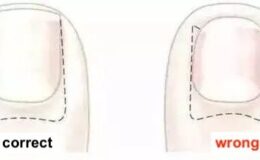Common Challenges faced during Breastfeeding
- By : Jessica Jiayi W
While many mothers are aware of the myriad benefits of breastfeeding, a surprisingly lower number actually practice it. Breastfeeding indeed presents its own set of challenges. Let’s explore practical solutions to support mothers through these hurdles.
- Should I learn special techniques to start lactation before giving birth?
There is no necessity for pre-learning lactation techniques. Post-delivery, most women will stay in the hospital for a span (usually around three days for a vaginal birth and five for a cesarean section), where medical professionals are available to assist. More importantly, while various techniques for encouraging milk flow exist, the most effective strategy is regular breastfeeding.
A common misconception is believing that babies shouldn’t breastfeed when the mother’s milk supply seems low. It is crucial for new mothers to understand that irrespective of initial milk volume, encouraging frequent breastfeeding helps stimulate milk production.
- What if I don’t produce enough milk?
It’s quite common for new mothers to feel their milk supply is inadequate. Often, the milk ducts aren’t fully clear. Instead of hastily seeking a lactation consultant, remember that the baby is naturally the most effective at promoting milk production. The more the baby nurses, the more milk is generated.
If there are no underlying health issues and the concern is solely about milk quantity, increased breastfeeding is usually the remedy. Nutrition-wise, adding broth and fish soup to the diet after the second week postpartum can aid milk production and increase supply.
- What if my breast feels hard, and can this lead to mastitis?
Breast engorgement can be painful and is not uncommon, especially if you’ve been away and haven’t nursed for an extended period. The first instinct might be to pump, but if that’s ineffective, continued breastfeeding is the answer. Typically, engorgement does not lead to mastitis, but should it occur, frequent nursing is the best solution.
- Breast milk seems thinner than formula; will my baby get enough nourishment?
Here’s an important tidbit: Breast milk is composed of foremilk and hindmilk. You might notice that the initial milk is thinner, which is the foremilk. It’s rich in water content but lower in fat. As feeding continues, the milk becomes whiter and thicker; this is the fattier hindmilk.
Breastfed babies usually do not need additional water due to the high water content in breast milk. If you find that the milk appears too thin, observe whether your baby dozes off after just a few sips. If the baby consumes less milk, they’re also getting less fat.
In conclusion, many breastfeeding issues can be effectively managed by encouraging more frequent nursing, which helps both with milk production and to ensure that the baby receives adequate nutrition.


